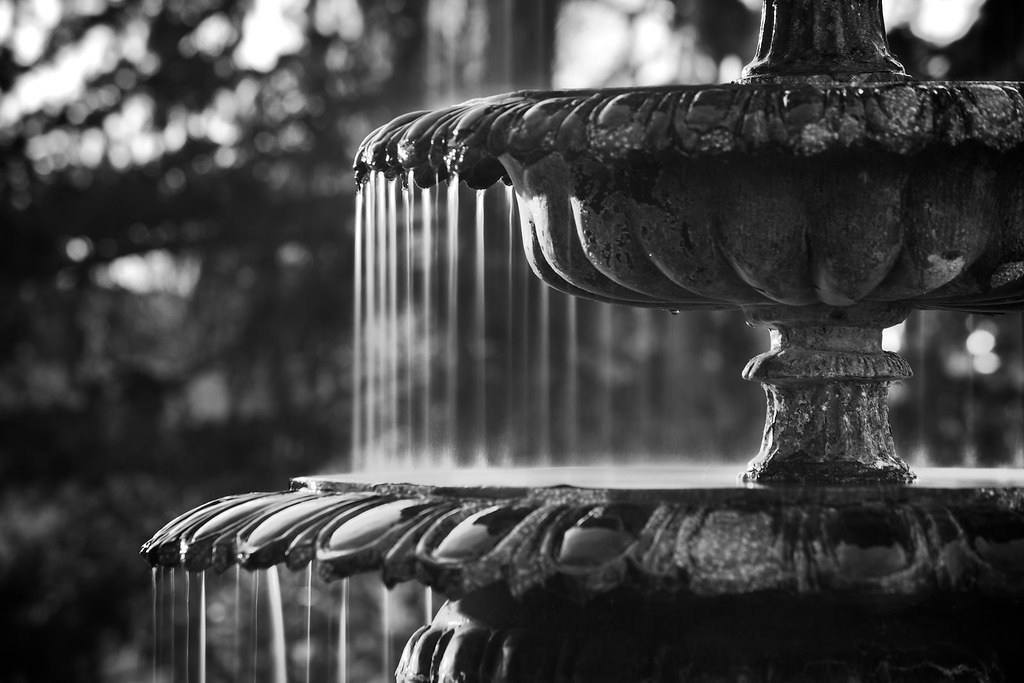Today I set out to try some shots with my new(ish) 10-Stop ND filter. This filter basically blocks the light getting thru the lens, by a set amount, and 10 stops is a really large amount compared to most ND filters. ND stands for neutral density, which means the filter doesn't have any color to it, it basically blocks all the wavelengths of light evenly. Most ND filters that you can find at camera stores block between 1 to 3 stops of light (oh, by the by, a STOP is the unit by which exposure is measured in photography. The aperture and shutter speed and film speed are all measured in STOPS or fractions thereof). Why would one use a ND filter? Well, first let's get to the heart of the matter. Let's say I want to capture motion blur in my image. Waterfalls are the classic example of this. Glassy, silken streams of water cascading over rocks and moss...this is achieved thru a slow shutter speed, the amount of time that the sensor or film is exposed to light. As the water falls through the image, it blurs. Same thing happens when you try to take a picture in a dark situation without a flash...the long shutter speed causes blurring if the subject moves, or if your hand is shakey. Well, in a bright situation, like the middle of a sunny day, the camera has plenty of light to make a proper exposure with a motion-freezing shutter speed. Even if I make the lens aperture very small (letting in less light), I still have a fairly fast shutter speed. I can use a slower (ie, less sensitive) ISO or film speed, like 100 ISO, to get a slower shutter speed, but in full sun it would be approximately 1/100 of a sec at f/16 aperture. This may not be slow enough at a waterfall to capture the motion in a silky fashion; it may just freeze the water in midair. If I slowed the shutter speed, I would get the blur, but the shot would be overexposed...this is where the ND filter comes in. Blocking the light evenly, I can add 3 stops of shutter speed to the image with a 3 stop filter, and TEN stops with my 10 stopper. In the previous example, that'd be 1/13 of a second at f/16 for 3 stops, and 10 secs for the ten stop filter. If I stack the two filters (13 stops), I get an 80 second exposure, and if I then drop my ISO to 50, and stop my aperture down to f/22, I have a 5 minute, 20 second exposure to achieve what I get at 1/100 sec without my filters, in broad daylight. Bring a tripod people.
Ok, that was as photo-dorky as I'll get today.
The shots I had in mind didn't work out so good, but I can see some potential in the approach, so I'm going to continue trying to get something that works. The problem I had was my subject matter. When you shoot a 4-minute exposure, things like cars and people, moving relatively fast through the frame, don't stay in one place long enough to register in the exposure. You need something that moves, but moves in the same path the whole time, and is hopefully brighter than what it's in front of...like water. Moving water is always a good subject for long exposures, I'll show you again when I go to the beach in a few weeks. The length of the exposure also makes a big difference in how the water registers. For example, the posted shot above was a 4.5 minute exposure with the 10-stop filter. The shot below is the same fountain without the filter, 1/8 of a sec., and before I converted to black and white. Still getting some motion blur in the image, and it looks cool, but it doesn't have the silky, ethereal quality of the first shot. Neither is necessarily better than the other, it's just a matter of which way you want the picture to look.
Now, I need to figure out how to apply these techniques to human subjects...
-llg

